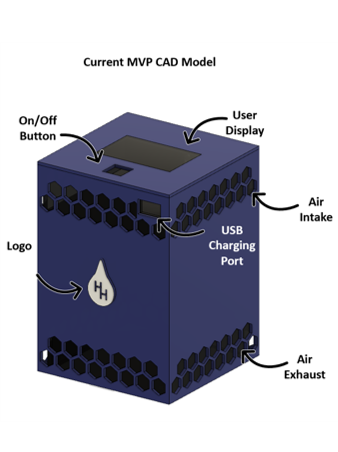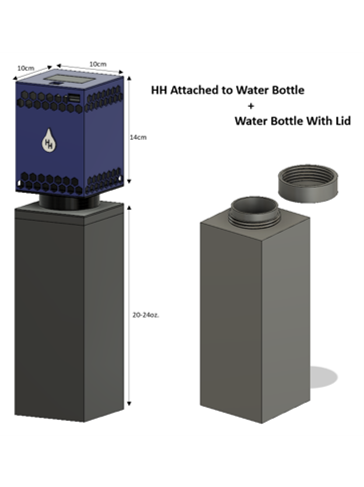
Project Category: Entrepreneurial
About our Project
Handheld Hydroasis is the portable solution to generating clean drinking water for military personnel during off grid operations who fear not having reliable and clean drinking water to survive. Handheld Hydroasis provides clean drinking water with a device that is portable and reliable for military personnel which will allow them to survive in any location, under any condition.
Powered by the user with a hand crank, this self-filling water bottle is completely self-sustainable and provides water to the user on demand. Unlike the mainstream company Lifestraw which requires an existing water source, Handheld Hydroasis condenses water straight from the atmosphere. In contrast to Brita filter bottles which can only remove particulate contaminants, the Handheld Hydroasis can also protect users from bacteria, viruses, and parasites with its UV light purifier.
Current Starting Price: $400.00CAD + Tax
“The water bottle that pulls water out of thin air, wherever you are,whenever you want.”
Handheld Hydroasis
Want to chat?
Meet the Team
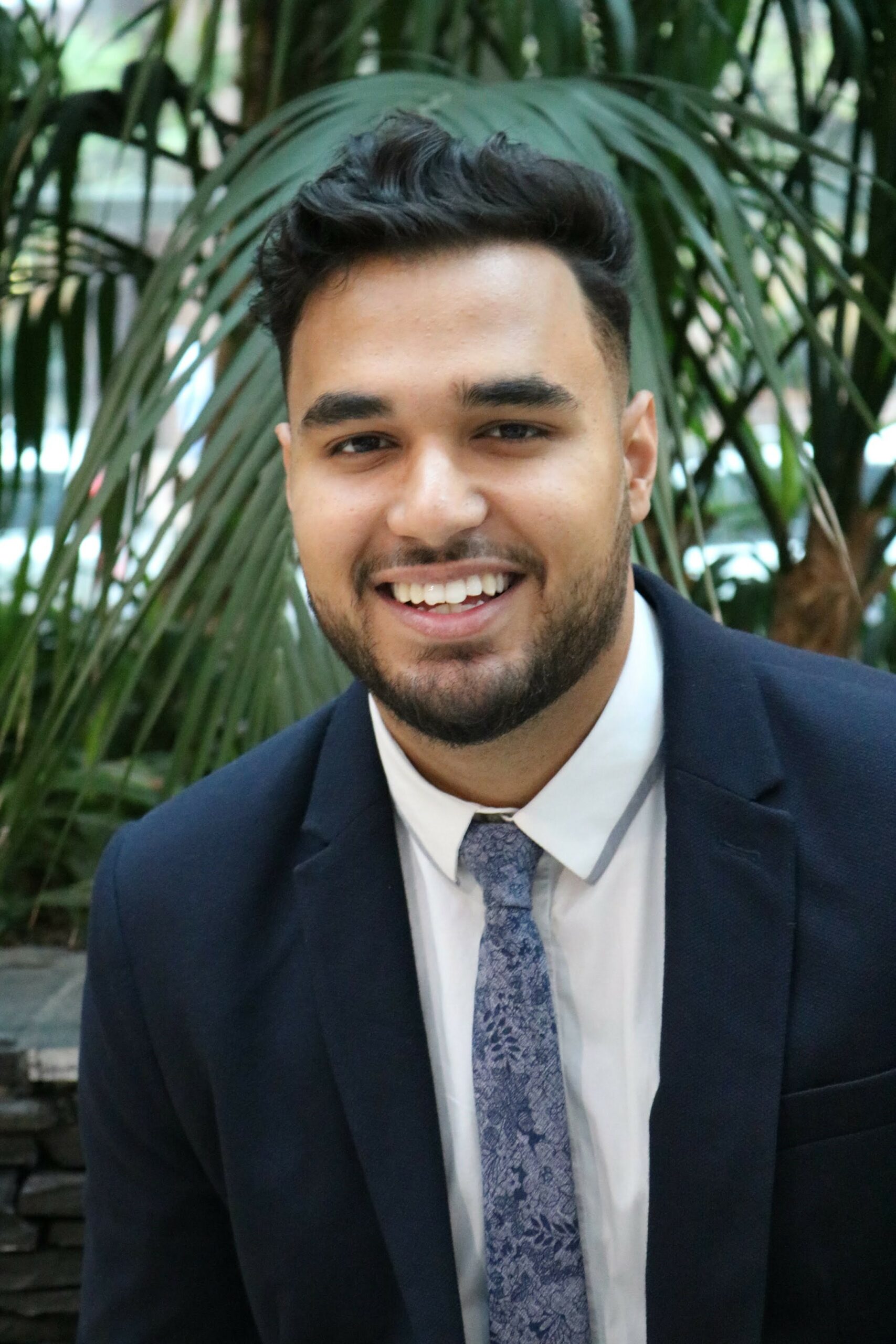
Adbhut Mangal
5th Year B.Sc. Chemical Engineering, Biomedical Specialization
Adbhut is completing his B.Sc. degree in Chemical Engineering and specializing in Biomedical Engineering. He has participated in multiple innovation and business challenges to pursue his interest of entrepreneurship. He recently completed an internship at TC Energy in Pipeline Integrity and has rejoined the same company as a project coordinator.
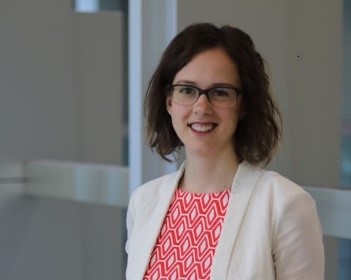
Brooke Mackay
5th Year B.Sc. Chemical Engineering, Energy and Environmental Specialization
Brooke has earned an undergraduate B.Sc. degree in Chemistry from the University of Lethbridge. She has a keen interest in energy and environmental issues, which is why she enrolled in the Energy and Environmental Engineering Specialization at the University of Calgary upon starting her second B.Sc. in Chemical Engineering. Brooke has previously worked at TC Energy during an internship in the Pipeline Integrity sector, and would enjoy returning to the energy sector as an EIT.
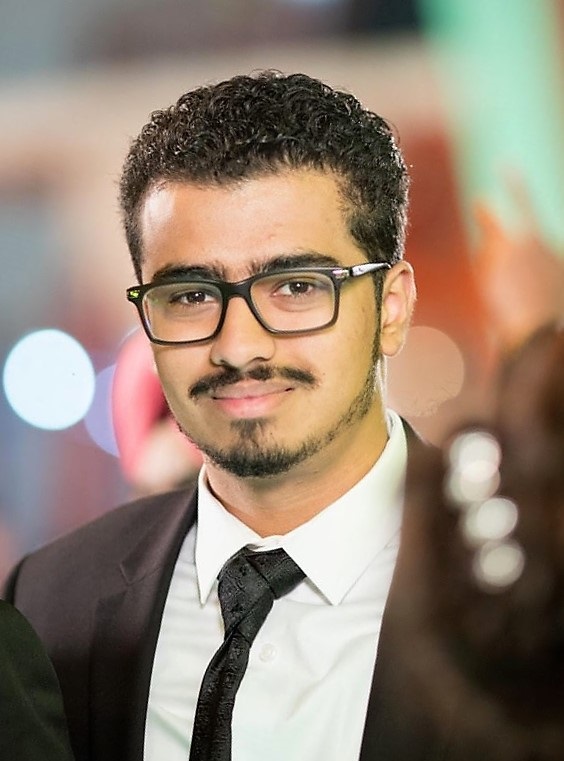
Harpreet Matharu
5th Year B.Sc. Electrical Engineering
Harpreet is currently completing his B.Sc. in Electrical Engineering. Having previous consulting experience through his internship at Corrpro Canada Inc, he redefined his knowledge in electrochemistry and gained valuable experience in the corrosion protection and AC Mitigation industry. Harpreet has been involved in various extra-curricular activities at the University of Calgary including the Peer Mentorship Program. His goal is to pursue a career in the renewable energy sector and technology industry.
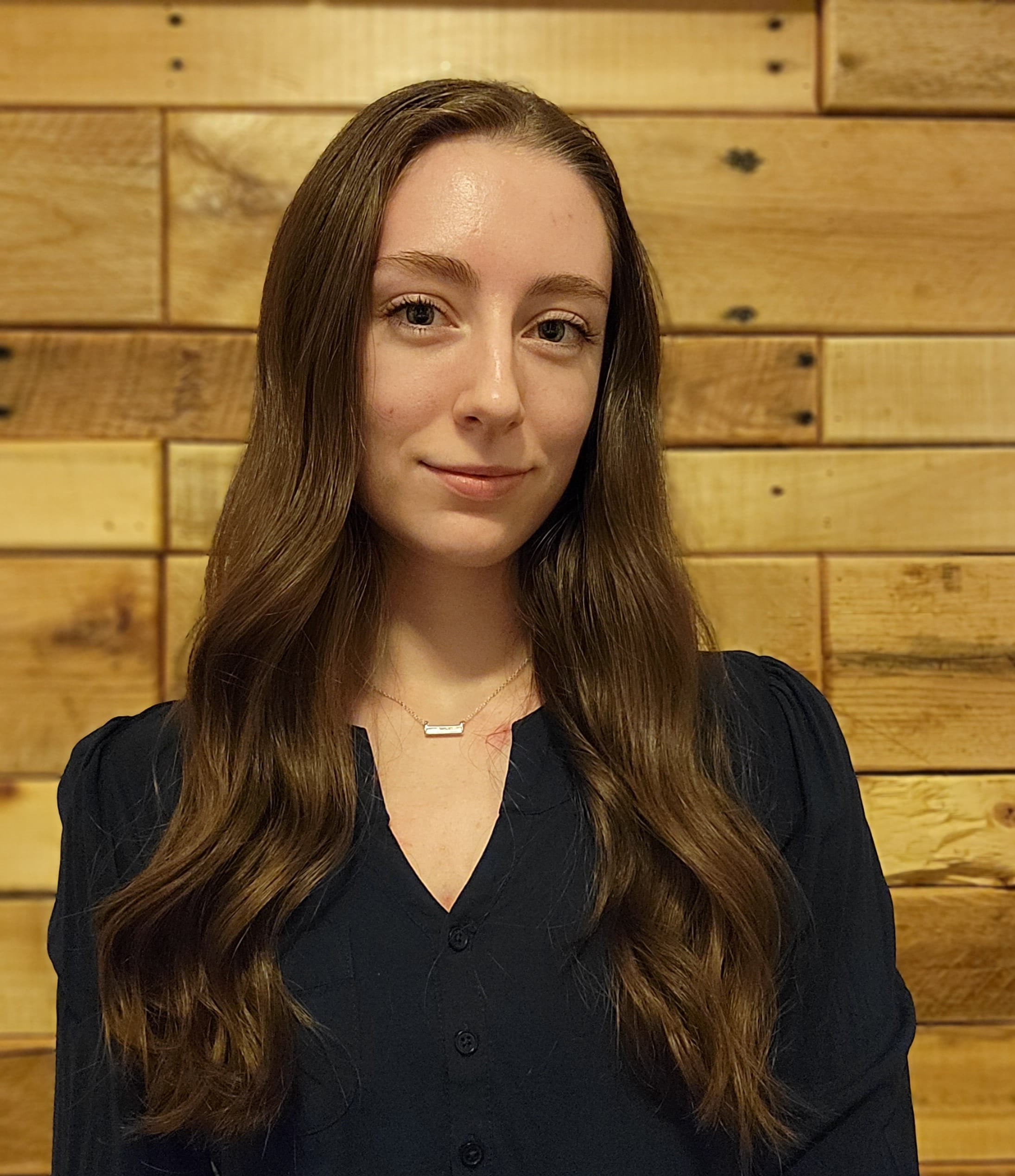
Meghan Van Arem
5th Year B.Sc. Chemical Engineering
Meghan grew up in northern B.C. and has a love for exploring the outdoors. She is passionate about strong foundations for future growth and has an interest in the renewable energy sector and all things environmental. Meghan has previously worked at Paramount Resources Ltd. in production and reservoir engineering and is planning on transitioning to renewable energy based engineering upon returning to the energy sector as an EIT.

Tahsin Iqbal
5th Year B.Sc. Electrical Engineering
Tahsin Iqbal is currently pursuing his B.Sc. in Electrical Engineering. He has twelve months of experience in the energy sector through his internship at Suncor Energy, where he gained valuable experience in high voltage power systems design and data analytics. Tahsin has been involved in clubs at the University of Calgary including UofC Solar Car and Global Brigades Calgary, and has a great interest in data analytics and software development.
Details about our design
HOW OUR DESIGN ADDRESSES PRACTICAL ISSUES
This project was intended to incorporate new electrowetting principles into a marketable, user-friendly product that generates and distributes drinking water. Reliable access to clean drinking water may difficult for a variety of demographic:
- Military Personnel – In the U.S. Army alone, over 5000 soldiers have been hospitalized due to heat related illnesses, a large percentage of which are caused by dehydration during missions in dry, arid climates.
- Impoverished Urban Populations – Homeless or impoverished communities can spend time and energy searching for access to basic resources, such as water. Having a mobile, sustainable, water generator will help these populations gain independence and self-reliability.
- Natural Disaster Victims – Often times, clean water supplies are disrupted during natural disasters leading to illnesses and increased death rates.
- Outdoor Enthusiasts – Many hikers, backpackers, and bikers carefully plan trips around water-accessible locations. Having the freedom to generate water with a small, light device will allow enthusiasts to explore new terrain.
WHAT MAKES OUR DESIGN INNOVATIVE
Current technology that uses electrowetting alteration does exist across various industrial applications but is not prevalent across current atmospheric water generators in the market. Handheld Hydroasis is innovative as it is the first device that takes advantage of altering electrowetting properties of the condensing apparatus to facilitate water production, while also being handheld. This prime feature of portability provides more flexibility to the end user as the technology can work in various types of climates, allowing users more freedom in the geographical locations they plan their expeditions.
WHAT MAKES OUR DESIGN SOLUTION EFFECTIVE
Handheld Hydroasis takes away the dependency of having to find a water source and that’s what sets this solution apart from competitors. By condensing water directly from the air, this allows users more freedom and provides a safety net from dehydration. Being powered by a small hank crank allows the user to be completely off grid for the entirety of their journey. By being completely self-sustainable, the reliability of the solution is greater than that of the common Lifestraw or Filtration tablet. High purity of the condensed water is guaranteed with the advanced oxidation filtration system. The key features of this device are:
- User Friendly – Display with battery life, water level, air temperature, and air humidity. Real time updates and automatic shut off when your bottle is full!
- Self-Sustainable – can be recharged with either a hand crank or micro-USB power supply.
- Compact – Lightweight at under 1lb and 14cm tall.
- Durable – Drop proof up to 4ft and water resistant.
HOW WE VALIDATED OUR DESIGN SOLUTION
We validated our electrical hardware by conducting strict experiments for all our hardware components, including the hand crank, water sensor, battery, and the unit as a whole. Our software validation was conducted with logic testing in which we analyzed our code for our battery, push button, temperature sensor, and humidity sensor. To validate our condensing material we have conducted extensive research in which we’ve tested various methodologies to see which material would be optimal. Experiments included voltmeter tests for conductivity, water alteration tests, and mechanical stability tests.
FEASIBILITY OF OUR DESIGN SOLUTION
The design itself can be divided into a few components:
- The Electronics – The electronic aspect of our product has proven successful, all of the initial deliverables have been met.
- The Structure – The condensing apparatus was designed similarly to mist eliminators, which are commonly used in industrial applications to capture water. This design is known to be highly effective.
- The Ability – The concept of capturing and releasing water molecules using electrowetting has been demonstrated successfully in a variety of different reports. However, the technology is still new and to incorporate it with our material may take some optimization.
Partners and mentors
We would like to extend a huge THANK YOU to those who helped us along the way with this project. To our academic advisor, Dr. Nashaat Nassar: Thank you for your guidance, feedback, and encouragement on this wild ride of capstone turned research. To the generous graduate students, Sebastian Sessarego and Maria Contreras Mateus: Thank you for the donated time and guidance in the laboratory to help with testing. To the Hunter Hub: Thank you for the generous funding we received to help us build our prototype. To the Ungrin Lab: Thank you to Valentyna Maslieieva, Emily Hiles, and Doug Kondro for the use of their laboratory, equipment and guidance. To our technical TA Aakash Bhatt and our business TA Jose Alejandro Menjivar: Thank you for all your feedback on our work and taking the time to help guide us in this journey. To the potential customers we interviewed: Thank you for your time, you helped us shape our design and provided valuable input.

